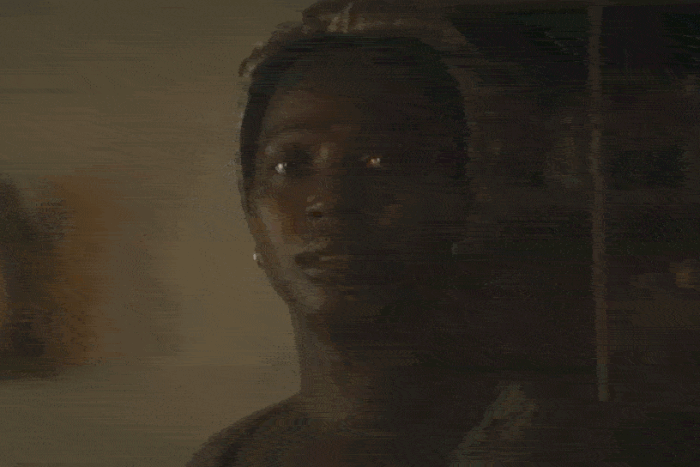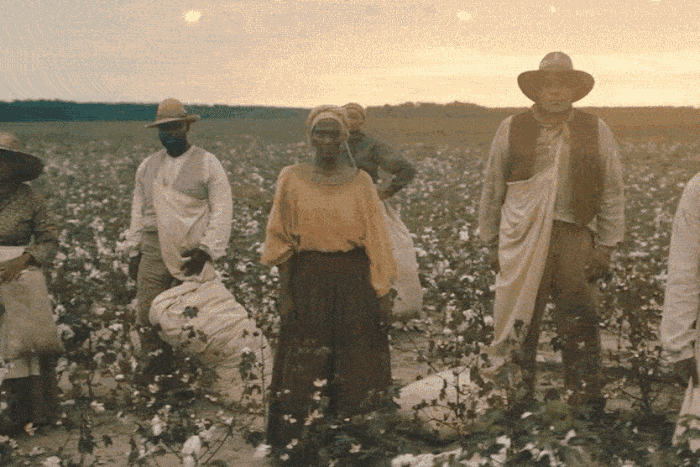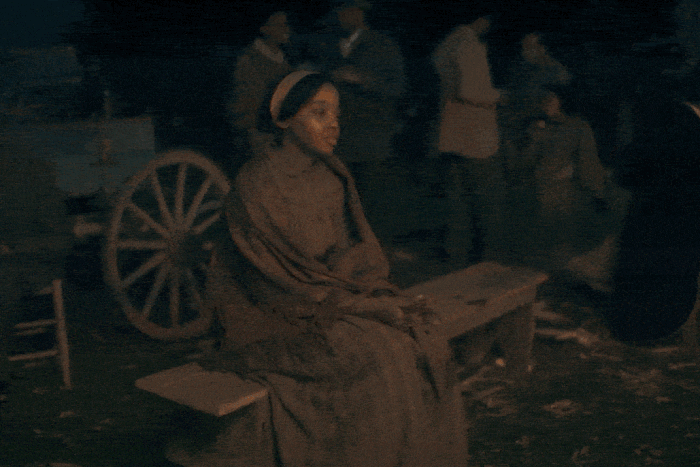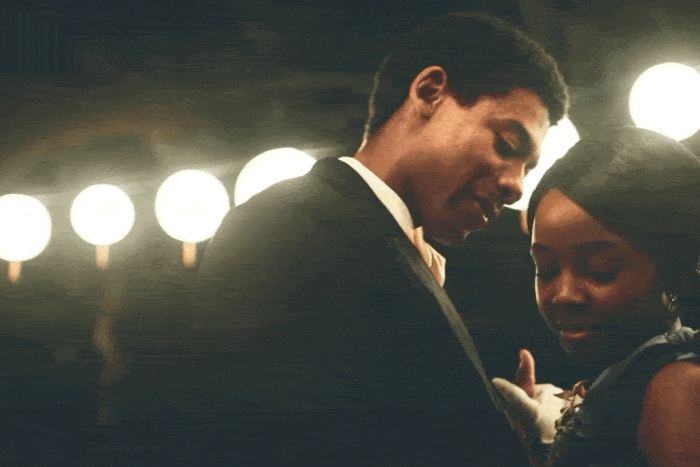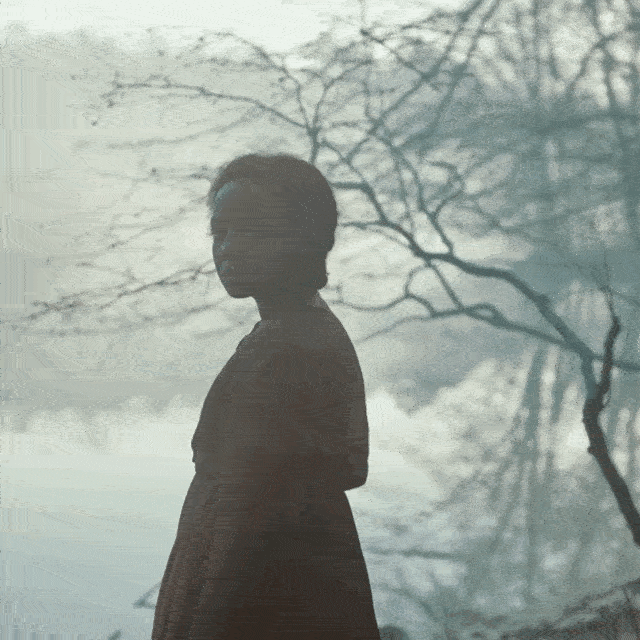
This article was featured in One Great Story, New York’s reading recommendation newsletter. Sign up here to get it nightly.
The Underground Railroad — the miniseries adaptation directed, co-written, and produced by filmmaker Barry Jenkins — is an excavation of a wound that has yet to heal.
This wound — the existence and afterlife of the transatlantic slave trade, which rewrote the rules of the world and the castes we have been slotted into — is one of the essential markers of American life. It has been festering for over 400 years and weighs on every step Black people take, individually and as a people, to this day. In charting the particulars of this wound through the lives of its characters, both enslaved and free, The Underground Railroad becomes a reckoning.
The Underground Railroad is not a history lesson though, nor is it a neat narrative forcing its audience to bear witness to brutality. It is more cunning and potent than that — more resplendent, too, in its visual and sonic grammar. As the story traverses the landscape of antebellum America, it reveals the inner lives of a deep bench of characters who leave an indelible mark, no matter how briefly they’re featured in the narrative. But this is ultimately the story of Cora (Thuso Mbedu), an enslaved young woman — just a girl, really — in Georgia. She was abandoned as a child by her mother, Mabel (Sheila Atim), who escaped to freedom under the cover of night, or so she believes. Cora is viewed as something monstrous and aberrant by the white people around her. Caesar (Aaron Pierre), an enslaved man who can read and write, encourages her to escape to freedom with him. She’s resistant at first. But soon Cora finds herself swept into a journey through lands and people both strange and familiar, while the inimical slave catcher, Arnold Ridgeway (Joel Edgerton), remains hot on her heels. Her mother remains the one figure to ever slip his grasp, and he’s hell-bent on catching Cora. As she travels from the Georgia morass to the Carolinas, and eventually to Indiana along a literal underground railroad, the show blooms into striking pluralities about home, identity, love, and kin.
The Underground Railroad isn’t flawless. There are issues with its approach, especially in the construction and development of its central character. But that only makes it a richer text to ponder, to turn over in the palm of your hand. Calling it merely beautiful does a disservice to the craft on display from Jenkins and his collaborators, including cinematographer James Laxton and composer Nicholas Britell, who worked with the director previously on the films Moonlight and If Beale Street Could Talk. It is a masterwork that puts into the spotlight the sheer power and communion that can be found with visual storytelling. This is a series not so much witnessed but felt.
Jenkins’s camera captures something I’ve always recognized in the South: the particularities of the sunlight. The sun feels different everywhere you go. When I am home in Loreauville, Louisiana, it reminds me of honey — thick and sweet. It envelops your body with its heat, like wearing a wool coat in the middle of summer. Jenkins’s camerawork has a textured quality that thrusts you into setting and helps you understand the characters that walk the land. And it makes this work cinematic in ways other television shows rarely are.
Many series over the last decade or so have been deemed “cinematic” merely because you can see the amount of money spent on the screen. But few actually move with the rhythm of film. In The Underground Railroad, images unfurl with a care and sincerity that demonstrates Jenkins’s love and understanding of the history of the medium. In his revealing review of the series, Blair McClendon aptly compares Jenkins and Laxton’s camera to that of the great Max Ophüls. Their work, like Ophüls’s, has a swimming quality. It sincerely and slowly pans through its environment, charting faces, bodies, and landscapes. But it would be simplistic and inaccurate to call Jenkins’s style “roving.” The camera is never a neutral observer. It is curious, empathetic, and deliberate. Jenkins deploys it delicately and forcefully, with the dancerly grace of a ballerina. There’s a striking friction in how he moves between ostentatiously shot scenes (that call attention to themselves while never taking us out of the moment), camera movements that float through the surroundings, and static close-up shots that often act as punctuation, infusing the proceedings with new meaning. One of the most dynamic examples of this is nestled in episode four — an extended flashback to Ridgeway’s youth, in which he pointedly asks the family’s freed Black maid her thoughts on slavery in a tone dripping with venom. The camera is positioned to look slightly up at her face before gliding and landing on the intense gaze of Ridgeway’s father (played dynamically by Peter Mullan), who observes his son and witnesses the depth of his hatred for Black folks clearly for the first time.
The visual lyricism at work here is what makes the characters feel so alive. (Occasionally the show gives way to speechifying, which is unfortunate — it’s at its best when the dialogue operates on the level of terse poeticism.) Point-of-view shots are plentiful, lending the series a remarkable, even intimidating, intimacy. Cora is granted many of these, but they also rest on unexpected figures, like a Black baby crying as he’s taken by slave catchers. Open doorways are a focal point, harkening to John Ford’s work in The Searchers. There’s a particularly moving use of this motif in episode ten, when a young Cora, in flashback, sits and waits for a mother who will never return as the verdant breadth of the plantation lies before her. Doorways become thresholds of choice and yearning, speaking to the complexities that mark the internal lives of each and every character. One of the most powerful visual throughlines is how Jenkins films characters staring directly at the camera with unreadable expressions. Sometimes alone, other times in a group, these shots have the quality of portraiture.
There is an extraordinary moment in episode nine for how gently it worms its way into its character’s perspective. The inhabitants of Valentine farm, a plot of land and popular winery in Indiana run by and for freed Black folks, are dancing and enjoying themselves in the hush of darkness cut through by the amber warmth of a bonfire. Cora is shown sitting and watching the offscreen flames, her face marked by a sense of peace and relaxation rarely seen before. It begins with a crane shot viewing Cora overhead, then in profile, until the camera slowly swoops down to eye level with her. It tracks in closer and closer until she turns her head slightly, looks directly into the camera, a smile creeping on her face. The person she’s looking at, we can assume, is a freedman she develops a relationship with named Royal (William Jackson Harper), who was instrumental in her second escape from Ridgeway. This movement shows the breadth of what Jenkins’s camera can do — its understanding of the stories that are held in a gaze.
Violence and death are never far within this world. It would be a fool’s errand to believe there is meaning in bearing witness to such matters. Bearing witness is the idea that powers the proliferation of videos of Black and brown folks being killed by the police. As if it has ever changed the heart and mind of a non-Black person. As if Black people need to bear witness to such violence to teach us what we already know and feel in our bones: that the afterlife of slavery can be felt on every street corner in the United States of America. Jenkins resists ascribing meaning to violence. This isn’t to say it isn’t seen on the series. In the first episode, an enslaved man named Big Anthony (Elijah Everett) who attempts to escape is captured and brought back to the plantation. He’s whipped until the flesh peels bloodily from his body before he is eventually set on fire while he’s still alive. This isn’t different from what one would expect to see in slavery pictures, which often exist at the register of horror due to where their focus lies — on the Black body, not the personhood and soul that animates it. But Jenkins handles this scene differently. After Big Anthony is set aflame, there is a point of view shot from his perspective, as he blinks through smoke and fire. It’s a surreal choice that pushes the boundaries of what such a story can do and how deeply it can embed us in the perspectives of its characters.
Jenkins doesn’t shy away from the trauma wedded to the Black experience, but he doesn’t depend solely on violent imagery to communicate it. Some of the most harrowing fates of beloved characters are judiciously shot in a way to suggest violence without grotesquely bathing in it; or they are related, rather chillingly, through oral storytelling. We never see what happens to Caesar. We hear it from the lips of Ridgeway, who relays his brutal fate to Cora. She puts her hand to her mouth to muffle her cries in order not to give Ridgeway any satisfaction. There are no cutaways to scenes or even flashes of what happens. Jenkins doesn’t want us to turn away from trauma. He wants us to look at it from a different angle.
Watching The Underground Railroad, I found myself thinking about a passage from Saidiya Hartman’s triumphant work Lose Your Mother: A Journey Along the Atlantic Slave Route: “Were gaps and silences and empty rooms the substance of my history? If ruin was my sole inheritance and the only certainty the impossibility of recovering the stories of the enslaved, did this make my history tantamount to mourning?” The Underground Railroad is a ghost story. Cora is a woman so haunted by the past she refuses to escape it. The ghost that lingers most pointedly is that of her mother. The absence of Mabel is a double loss for Cora. She has lost not only her literal mother, but due to the strictures of slavery, she is disconnected from any sense of home or motherland.
Cora is a fascinating creation, not least because she stands in the annals of American filmmaking as the rare woman lead of a slavery epic. She’s enigmatic, rough-hewn, quick to anger. Her anger is rooted in the loss of her mother. In one evocative dream sequence in episode two, Cora imagines walking up to her mother in a doctor’s office, a place where she earlier discovered Black women are being sterilized. Mabel’s eyes are white, and they replay images of Cora’s birth. With one swift motion, Cora slits her throat. But trying to locate who Cora is — the contours of her personality and desires — feels like trying to catch smoke between your hands. By the end of the show, I had a frustrating realization: Cora is an utter cipher.
Cora’s inscrutability is directly linked to the fact that damn near every decision she makes is a trauma response. She often pushes away the very people she needs to let in. Thuso Mbedu plays her with a nearly permanent downturned scowl and gaze marked by a fiery intensity; the directing only further highlights this. This portrayal is all the more apparent because of the show’s deep bench of fascinating figures played by great character actors. Aaron Pierre leaves a particular mark as Caesar; he plays him with a stoicism that gives way to a well of vivid emotions. The young Chase Dillon plays Homer, an enslaved child freed by Ridgeway who acts as his loyal companion, in a way that breeds mystery and also highlights the ways Black children are forced by the world to grow up far too soon. William Jackson Harper is especially charming and evocative; his performance reaches its peak in an amber-lit scene in which he’s framed looking at the camera head-on, telling Cora he loves her. (The shot echoes similarly designed moments of intimacy at the center of Moonlight and If Beale Street Could Talk. The series is at its best when observing the ways Black people find love among the psychic, emotional, and physical wreckage of slavery.) Edgerton plays Ridgeway with a blend of cruelty, entitlement, and control that illuminates the tangled nature of his inner life. He’s also the clearest window into how skillfully Jenkins critiques whiteness in this series, revealing the depth of the soullessness and cruelty irrevocably nestled within the project of white identity.
This isn’t to say Cora’s character can only be found in moments of distress. In rare moments when she smiles — whether dancing in fine wares with Caesar or flirting with Royal — we get a window into who she is beyond her trauma response. There is an intriguing passage in episode five in which she tries to get another enslaved man, Jasper (a striking Calvin Leon Smith), to speak to her. There’s a desperation to her, a longing to connect previously unseen. But she is guided by trauma in ways no other character is, and it renders her impenetrable. Who is she beyond the anger she feels toward her mother, the trauma she’s experienced, and her desire to survive? I can’t fully answer these questions. I yearned for Cora to be emboldened by her anger, not nullified by it.
But isn’t it enough that Cora is just trying to survive? Why do I want such a specific narrative of catharsis and triumph that the show refuses? Perhaps it’s because of my own history. Watching Cora sit in the sterilization doctor’s office, I thought of my grandmother and great-aunt Zeze, who were both sterilized in their youth. I suppose I wanted something in this story that life can’t provide. I wanted for a moment to pierce through the absences in the archives of cultural, familial, and historical memory in order to capture an understanding of my ancestors who the show brings to mind, who somehow survived enough for me to be here, now, writing this piece. I wanted to wrest their names from oblivion. I wanted to understand not just the horrors visited upon their bodies whose remnants have been lost. I wanted to understand their dreams, their desires, the lilt of their laughter, the feel of their skin. I wanted what no show or archive can possibly provide: a history rewritten and made whole.
But The Underground Railroad often resists giving us what we want. Every time hope blooms, it quickly goes to rot. There is no catharsis. There is no closure. There is, however, something more soulful and true.
More on The Underground Railroad
- Squid Game Wins Its First Major Award at the Gothams
- When Presented With a Black Gaze, the Emmys Turned Away
- What to Stream This July 4th Weekend



